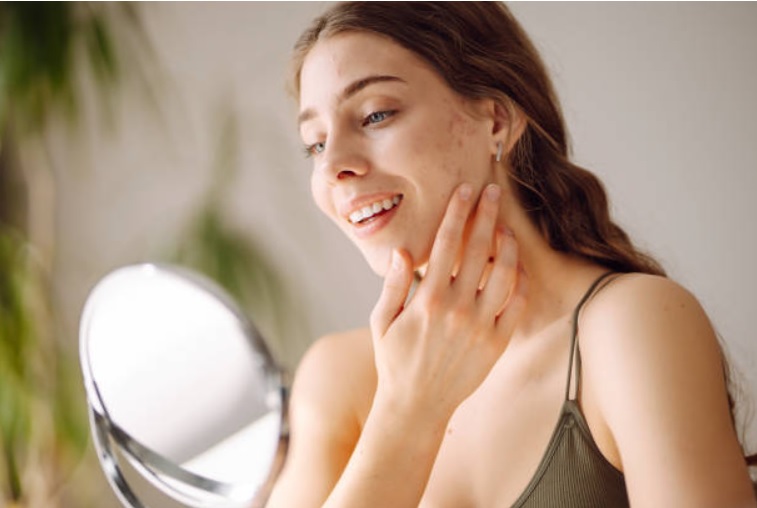Pimples and acne are terms often used interchangeably, but they refer to different aspects of skin issues. Understanding the distinction between them is essential for effective treatment and management. This article will explore the differences between pimples and acne, and how a pimple patch can play a role in addressing both conditions.
Defining Pimples and Acne
Pimples are a specific type of blemish that occurs when hair follicles become clogged with oil, dead skin cells, and bacteria. They are characterized by their red, inflamed appearance and can be filled with pus. Pimples are often isolated incidents and may occur as part of a larger skin issue.
Acne, on the other hand, is a broader condition that encompasses various types of blemishes, including pimples. It is a chronic skin condition characterized by frequent outbreaks of pimples, blackheads, whiteheads, and cysts. Acne often affects multiple areas of the skin and can be persistent, requiring a comprehensive treatment approach.
Using a pimple patch can be particularly effective for managing individual pimples. The pimple patch helps reduce inflammation and absorbs excess oil, providing localized treatment that complements broader acne management strategies.
Types of Pimples vs. Acne Lesions
Pimples are typically categorized into different types based on their appearance:
– Papules: Small, red, and inflamed bumps.
– Pustules: Pimples filled with pus, often appearing white on the surface.
– Nodules: Larger, painful bumps that are deeper under the skin.
Acne lesions include:
- Blackheads: Open comedones with darkened surface due to oxidation of trapped oil.
- Whiteheads: Closed comedones with a white or yellowish surface.
- Cysts: Large, painful, and deep-seated acne lesions that can cause scarring.
A pimple patch is useful for treating individual pimples, such as pustules and papules. It helps to reduce redness and swelling, and can also absorb pus from pustules, facilitating quicker healing.
Causes of Pimples vs. Acne
Pimples can be triggered by various factors, including hormonal changes, stress, and dietary influences. They often occur in isolated instances and can be linked to specific triggers such as certain foods or skincare products.
Acne is a more complex condition with multiple contributing factors:
– Hormones: Fluctuations in hormone levels can lead to increased oil production and acne outbreaks.
– Genetics: A family history of acne can increase susceptibility.
– Bacteria: Propionibacterium acnes bacteria can exacerbate acne by contributing to inflammation and infection.
– Environmental Factors: Exposure to pollution, high humidity, and certain skincare products can worsen acne.
For treating individual pimples related to these triggers, using a pimple patch can be beneficial. The pimple patch helps to address localized issues by reducing inflammation and protecting the area from further irritation.
Treatment Approaches for Pimples and Acne
Pimples can often be managed with topical treatments, including over-the-counter products containing benzoyl peroxide, salicylic acid, or sulfur. These treatments target the specific pimple and help to reduce inflammation and prevent infection.
Acne requires a more comprehensive approach. Treatment often involves a combination of topical treatments, oral medications, and lifestyle adjustments. Topical treatments may include retinoids, antibiotics, or hormonal treatments. Oral medications can include antibiotics or hormone regulators. Additionally, maintaining a consistent skincare routine and addressing underlying factors like diet and stress are crucial for managing acne.
A pimple patch can complement both pimple and acne treatments. By providing localized care, a pimple patch can reduce inflammation, absorb excess oil, and protect the area from external irritants. This can enhance the overall effectiveness of your acne treatment regimen.
Preventive Measures
Preventing pimples involves maintaining good skincare hygiene, avoiding pore-clogging products, and managing stress. Regular cleansing, exfoliation, and using non-comedogenic products can help prevent pimples.
Preventing acne involves a more comprehensive strategy. This includes a consistent skincare routine, avoiding triggers, and using prescribed treatments as directed. In addition, using a pimple patch can help manage emerging pimples and prevent them from developing into more severe acne lesions.
Conclusion
Pimples and acne are interconnected but distinct concepts. Pimples are specific blemishes that can occur as part of acne, which is a broader and more chronic condition. Understanding these differences is crucial for effective treatment and management. Using a pimple patch can provide targeted relief for individual pimples, helping to reduce inflammation, absorb excess oil, and protect the area. Integrating pimple patches into a comprehensive acne treatment plan can enhance overall skin health and improve the appearance of both isolated pimples and more widespread acne.


